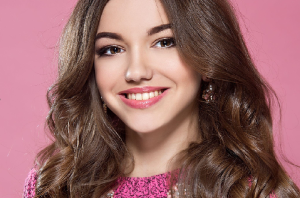Mature Hairline vs Receding Hairline: What’s the Difference?

Hairline
Like many other physical traits, your hair naturally changes throughout your life. As a baby, your hair was very soft and fine, and as you grew up your hair became longer, thicker, and most likely darker than it was when you were born.
Though hair goes through a natural transformation during the earlier stages of life with many textural and color changes, the appearance of hair can also change a great deal during adulthood. Some adults experience hair thinning due to a genetic predisposition or other factors like stress, presence of a health condition, or medications. However, even adults who don’t have a predisposition to genetic hair loss can experience a change in the appearance of their hair, particularly at the hairline.
If you’ve noticed that your forehead seems more prominent than it used to be or the hair at your temples has begun to thin or change slightly in texture, you shouldn’t immediately jump to the conclusion that your hair is receding; your hairline may simply be maturing. Not sure how to spot the difference and what each occurrence might mean? Here are some of the ways that a receding hairline and a mature hairline differ.
Receding vs Maturing Hairline: What’s the Difference?
The first thing you need to know about your hairline is that it was always meant to recede. Children and young teens have what’s called a juvenile hairline, which is perfectly even across the forehead and rounds at the corners near the temples. Starting around age 18-28, this hairline will start to naturally shift into a mature hairline.
This could mean the development of a widow’s peak with the hairline pushing back on either side, or it could mean the entire hairline moves back slightly as a unit. It also typically comes along with some light thinning at the temples.
Genetic hair loss, also known as androgenetic alopecia or pattern baldness, has just as much to do with hormones as it does with the state of your father or grandfather’s hair. A good deal of our health is determined by hormonal balance, and your hair is no exception. One such hormone is dihydrotestosterone, or DHT. This hormone is involved in the development of certain characteristics during puberty such as a deeper voice and body hair growth.
A normal level of DHT is important to maintain a mature hairline well into adulthood. However, when the body produces too much DHT, pattern baldness is known to occur, causing the hairline to recede past where a normal mature hairline would sit and even complete baldness over time.
How Can I Tell If My Hairline is Maturing or Receding?
At the end of the day, a maturing hairline and a receding hairline can look fairly similar. Both involve a slow pushback of the hairline or the development of a widow’s peak with slight thinning at the temples. The main factor that distinguishes the two is time.
If you’re noticing changes in your hairline, the most important thing to do is to monitor them closely. If your hairline shifts slightly over a period of a few months and then stays put for several months or even a year, you’re most likely dealing with normal maturation of your hair. However, if your hairline and the hair at your temples continue to recede at a regular rate or the receding appears to be occurring in a patchy fashion, you may have genetic hair loss on your hands. Another telltale sign of pattern baldness is an overall thinner appearance of hair in addition to a receding hairline and balding at the temples.
Treatment Options
It may take a while to be sure whether or not your receding hairline is caused by the natural progression of your hair or a genetic predisposition to balding. In fact, even naturally receding hairlines can evolve into pattern baldness later in life. Therefore, keeping treatment options in mind is a great way to be proactive with your hair health.
For a non-medical and non-surgical option, you may want to consider laser hair caps. These caps are designed with low-level light therapy, a hair loss treatment method that stimulates blood flow to the scalp and rejuvenates the hair follicles. Through this process, the caps simultaneously slow hair loss and encourage new hair growth.
Other options for halting hair loss include finasteride, a prescription-only medication, and minoxidil, a topical solution. Many people struggling with hair loss have found that the two work best when used in tandem. Additionally, decreasing stress levels and filling your diet with nutrient-rich foods are two all-natural ways to reduce your likelihood of hair loss.





